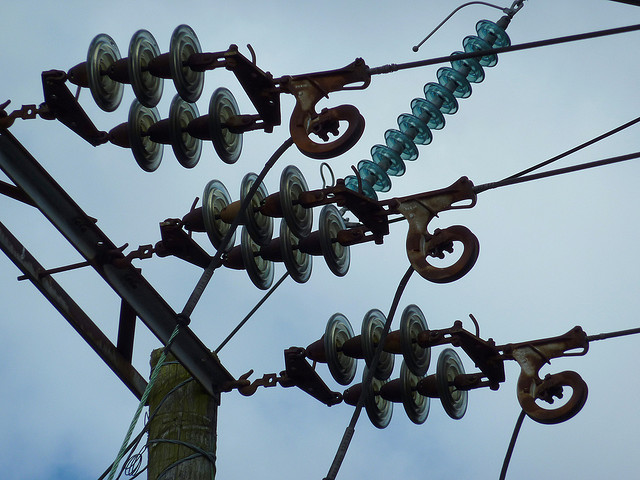Power Costs Could Be Going Up

On March 1, Rocky Mountain Power filed a notice with the Public Service Commission (PSC) to raise rates on its Wyoming customers by 21%. If approved, the rate increase would go into effect after Jan. 1, 2024.
Rocky Mountain Power serves around 150,000 customers in Wyoming, in Laramie, between Douglas and Casper, in the Big Horn Basin, and almost all of Southwest Wyoming.
“Asking for a 21% rate increase is a very large request,” says AARP Wyoming State President Sam Shumway. “You can be certain that the Public Service Commission will want to hear from the public in this case as to how a 21% increase will impact the wallets of Wyoming. We intend to make sure the public has that opportunity.”
It is likely that the case would go before the PSC for a hearing in October or November 2023. Anthony Ornelas, Administrator of the state’s Office of the Consumer Advocate (OCA) says his organization will intervene in this case, which will be litigated before the PSC. The OCA is a division of the Public Service Commission, charged with representing the interests of Wyoming citizens and all classes of utility customers in matters involving public utilities.
“The OCA recognizes the magnitude and impact that a 20+% rate increase would have on families and businesses,” Ornelas told AARP Wyoming. “Our office has intervened in this case and will be conducting a thorough examination of all the relevant facts and issues in this proceeding over the next 7-10 months to ensure that the rates charged for electric service are just and reasonable.
“I would encourage any interested consumer to engage in this process by providing public comments directly to the WPSC, which will become part of the record in this proceeding and be considered by the Commission as it reaches a decision in this matter.”
Ornelas went on to say there are three overarching issues driving the rate increase: forecast increase in power costs; reliability of the Western Interconnect; and historically low interest rates and high inflation rates.
“Rising financing and operating costs are then passed onto ratepayers through higher utility bills when rates are reevaluated during a generation rate case proceeding,” Ornelas says.
According to a statement by Rocky Mountain Power, the company won’t make any profit on the rate case - this is a direct pass through cost to the customer. Rocky Mountain Power suggests 97% of the rate increase will go towards net power cost.
“It’s important to remember that these price increases do not result in higher revenues for the company. They are passed through to customers because they are generally outside the company’s reasonable control,” PacifiCorp (Parent company of Rocky Mountain) Spokesman David Eskelsen says.
For its part, Rocky Mountain Power does not deny that 21% is a big change. Eskelsen says the increase is prompted by increases of 89% in the natural gas market and 38% for coal. He points out a major factor in the rising cost of natural gas is the conflict in Ukraine, which has decreased the European availability of natural gas from Russia, which has led to European demand being filled by US supply of natural gas. He also claims new federal rules in coal generation are also muddying the water for future price certainty for Rocky Mountain. All that has led to wholesale power costs increasing 199% since 2021, according to PacificCorp.
The company reports it provides 95% of the power it supplies to customers from power plants it owns or buys through long-term power purchase contracts. The company buys the remaining 5% on the wholesale market. While wholesale power has generally been less expensive than Rocky Mountain’s generated power, Eskelen points out those prices are more volatile and outside the company’s control.
Ornelas agrees with the issue of wholesale power costs, pointing out annual average wholesale power costs in 2017 were around $25 per megawatt hour, compared to over $90 per megawatt hour today.
“As part of this filing, the OCA intends to conduct a focused review of these and other factors that impact the overall net power costs forecasts included in RMP’s application,” Ornelas says.
Although Rocky Mountain Power suggests 87% of its rate increase will go towards net power purchase, there is part of the rate increase going towards capital investments. Specifically, $6.7 billion of capital improvements will be placed into service between July 1, 2022 and Dec. 31, 2024. That money will go towards the Gateway South, Gateway West power transmission lines, the Rock Creek I Wind Project, the Foote Creek II-IV and the Rock River I wind repowering projects.
The Gateway South project is a transmission line that runs from roughly Medicine Bow, Wyoming through Carbon and Sweetwater Counties before diving south through Northwest Colorado, and eventually down to south of Salt Lake City. The Rock Creek Wind Energy Center is a wind project near Arlington, Wyo. that will power 195,000 homes. Rock River Wind is a wind farm with 50 turbines in Carbon County.
While that power generated in Wyoming and transmitted through these new lines goes to other states, Ornelas does not agree with the assertion Wyoming is being asked to pay for power going to other homes in the region. He points out the integrated nature of PacifiCorp actually works for the benefit of Wyomingites who are able to take advantage of economies of scale across the company’s western footprint.
“As part of the OCA’s overall review of this application, new capital investments will be reviewed to ensure that they have been completed prudently, within budget, and that they are used and useful to the extent that Wyoming ratepayers are asked to pay for these investments according to the agreed upon allocation protocols,” says Ornelas.


